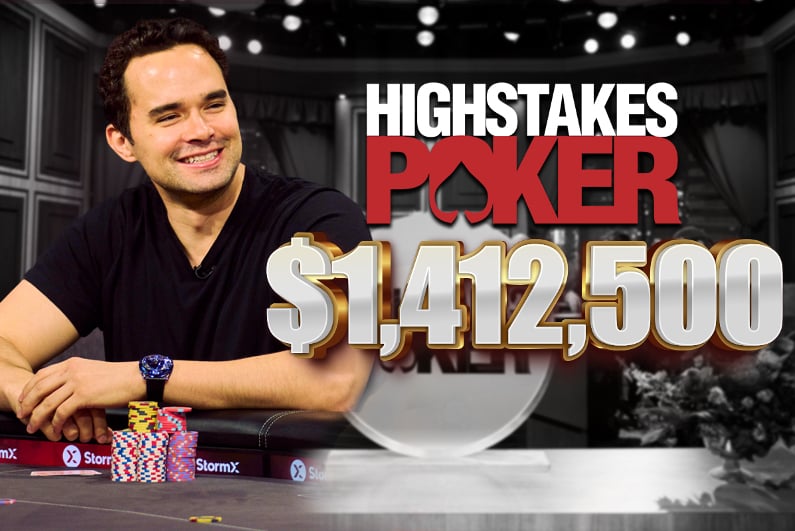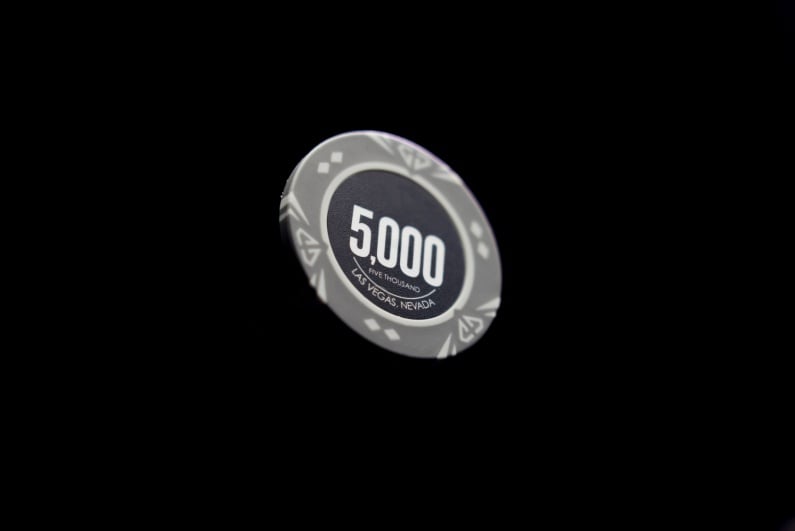The next big thing
Over the course of my 15 years as an online poker pro, I’ve seen a number of new formats and innovations catch on. The first one I can think of is Full Tilt’s Rush Poker. If that name doesn’t ring a bell, it’s because it died with Full Tilt. The name that is, not the concept. Stars rebranded it as Zoom, and other online sites gave it their own name.
an idea so good that it was worth a million dollars
The (possibly apocryphal) story doing the rounds at the time was that the inventor of Rush walked in off the street and told Full Tilt he had an idea so good that it was worth a million dollars. They were understandably skeptical at the time until he told them the idea, at which point they agreed and paid the man to be first to market with a format that quickly took over online cash.
Spin and Go’s in all their names and guises similarly transformed online Sit and Go’s so that three players, fast games, and a lottery component to determine the prize pool became the dominant form. Progressive Knockout (PKO) tournaments did likewise in the Multi-Table Tournament space.
It goes without saying there were also formats that failed to catch on (hello Flip Outs, Flip and Go’s, and Goodbye Timed Tournaments). There were also formats that burned bright for a while but then faded (who remembers 3x’s, or Double or Nothings?)
A live innovation
All of these innovations were almost exclusively in the online poker space. Live, tournament, and cash poker have remained largely unchanged in that time, to the point that the single biggest innovation I can think of is procedural rather than structural (the big blind ante). The same can be said of reentry tournaments, the other big live innovation.
The primary reason most of the online innovations have not translated over to live poker is they require something that is much more easily done by a computer, like tracking progressive bounties or randomizing Spin and Go payouts.
could very well become the dominant format within a few years
Enter the one true non-procedural innovation we have seen in live poker, the Mystery Bounty. These have caught on like wildfire since they were introduced to the point that most live festivals have at least one, and many (including myself) believe they could very well become the dominant format within a few years to the point that most live events will become Mystery Bounties in the same way that most online competitions are Progressive Knockout Tournaments (PKOs) these days.
Why all the fuss?
I played my first one recently at the European Poker Tour Prague last year and I was instantly as much of a fan as everyone else. One of the reasons PKOs took over online is they address a lot of the things recreationals don’t enjoy about tournament poker (the incentives to play very tight a lot of the time, and to stall around money jumps for example).
As I explain in depth in ‘PKO Poker Strategy’ (still the only book specifically on the format), tight is not right in a PKO. If you’re not in there gambling for bounties or trying to run up a stack that will allow you to do so, you’re not doing them right, and costing yourself a lot of expected value in the process. All of this is another way of saying that PKOs are just a lot more fun than normal tournaments. The fact that they can’t perfectly be solved also gives solace to those who worry about real-time assistance and other solver-related cheating.
creates a unique buzz in the room
In the live space, Mystery Bounties seem destined to go on scratching a similar itch. Not only does the chance to win a significant amount of money just for knocking someone out represent a significant draw to recreationals, it also creates a unique buzz in the room (at least until the big bounty is drawn: more on that later).
The format explained
There are two factors that differentiate Mystery Bounties from traditional bounty tournaments. The first is that the bounties awarded vary randomly, and are not known until you collect your bounty. The second is that there is not a bounty on everyone: they only come into play at a certain point in the tournament, usually a set % or a time (such as Day Two, or in the money).
These two factors are interrelated. If there was a bounty on everyone’s head then the average of that bounty wouldn’t be very high, and there wouldn’t be as much excitement generated as all the bounties (including the biggest one) would be a lot smaller. It’s the fact that only a certain percentage of the field survives to the bounty portion that magnifies the value of the bounties.
For example, the $1,000 World Series of Poker Mystery Bounty was split down with $700 going to the normal prize pool and $300 to the bounty. That means that if there had been a bounty on everyone’s head, the average bounty would only have been worth $300: not that big a deal in a $1,000. However, by deferring the bounties until Day 2, when less than 5% of the field remained, this number was magnified to roughly $6,500, allowing them to offer a big bounty of $1m (won by Matt Glantz) and still have enough to pay out lots of other big bounties and a minimum of $1,000.
The strategy
Bounty tournaments are so complex they will never be solved, but I will attempt to identify what I see as some of the biggest immediate considerations.
In a Mystery Bounty, once you are eliminated you head off to find out how much each bounty you won is worth. You pick from a pool of random prizes. You could pick a €500 ($481) bounty, or it might be a €50,000 ($48,093) bounty, picked essentially from a tombola, box, or some other random mechanism. Once a bounty is removed from a prize pool it is gone.
From memory, the breakdown of prizes in the first event I played looked something like this:
• Two bounties worth €20,000 ($19,237)
• Three bounties worth €10,000 ($9,619)
• 10 bounties with €5,000 ($4,809)
• 20 bounties worth €2,000 ($1,924)
• 30 bounties worth €1,000 ($962)
• 120 bounties worth €500 ($481)
The big adjustment here is that you have to assume that any bounty you win is worth the average bounty size at the time you won it. In the example above, if you win a bounty at the start with 186 players left, the average bounty is worth €1,612 ($1,551). Just because the €50,000 is in play does not mean you should play as if you will win that.
If you get down to a nine handed final table and there are eight €500 bounties left and one €50,000, the average bounty size is now €6,000 ($5,774). As long as the big bounties are in it will bring the average bounty size up, when all the big bounties have been won you can assume the average bounty size is low and switch to a more conservative style.
most people overestimate how big a factor it is whether the big bounty is still available
However, you don’t want to overdo this. In my experience most people overestimate how big a factor it is whether the big bounty is still available, or already gone. For example, at the WSOP a friend who went deep told me about a fold he made. I said with the bounty considerations I thought it might be a call even though it would be a clear fold in a normal tournament. He responded by saying that with the big bounty already gone he didn’t think the bounty was much of a factor. In fact, when we worked it out, while the departure of the big bounty from the prize pool into Matt Glantz’s net worth had decreased the average value of the remaining mystery bounties, it had only reduced it from $6500 ($6,255) to $5500 ($5,293).
Once you have calculated the average value of the bounty the next thing to do is to convert that into tournament child. For example, let’s say you entered a tournament where 750 went into the normal prize pool (so that’s how much a starting stack is worth) and 250 into the bounty pool. Late in the tournament with bounties in play, and worth on average 6000 each, how much is this in chips. The answer is since 6000 is eight times the 750 that represents the value of a starting stack, it is worth eight starting stacks (whatever that is in chips). So every time you’re considering a call that will win you a bounty if you win the pot, add that number of chips to the actual pot, and ask yourself if you now think it’s a call.
Late registration
Another factor to consider is late reg. If this goes very late, it creates a situation where it’s massively profitable to max late reg. In the first Mystery Bounty I played in Prague it was possible to reg at the start of Day 2: the point at which the bounties came into play. We lost about 60% of the field on Day 1, so if you bought in on Day 2 you were sharing 100% of the bounties with just 40% of the field. The fact you have a below average stack mitigates that to some degree, but not completely. Plus you start closer to the money so there is an additional ICM benefit too.
You do come in with less than the average but there will also be lots of players who late reg who you can win a bounty from right away, as well as stacks from Day 1 that ended the day below the average. On my Day 2 table, three late reggers joined, and they were immediately able to compete for each other’s bounties, plus one other player who bagged up less than a starting stack.
This is a situation therefore where it depends on what other people are doing. If everyone bought in on Day 2, there would be no advantage to doing so. At the other extreme, if you were the only person to do so, your advantage would be minimal as you wouldn’t be able to win many bounties (if any at all) from the start. But if a significant minority of the field is doing so, they gain considerable EV from the Day 1 players.
you are heavily incentivised to end the day with a big stack
If you play Day 1, it’s very important to end the day above the starting stack. If Day 2 late reg is possible, it is very important to cover those players right away. This creates a satellite ICM effect near the end of Day 2 where risking giving up a big stack if it meant going below starting stack is a big mistake. However, at the start of Day 1 play should be looser, because you are heavily incentivised to end the day with a big stack.
If you are a short stack on Day 1 it is worth gambling at the end of the day. In the Prague event I guesstimated a €2,700 ($2,603) buy-in starting stack was worth more than €3,500 ($3,374) at the start of Day 2. If you are short at the end of Day 1 your stack might only be worth €1,000 ($964) and therefore worth gambling with and rebuying if you bust, so you can cover the late reggers. And even if you bust, you can buy a new stack worth something around €3,500 ($3,374) for €800 ($771) less!
Teething problems
As with any new format where there’s variability in how you want to structure them, there’s no accepted industry standard on things like how much of the field should remain when the bounties kick in, how big the bounty should be and how the others should be distributed, or how the random draw should be done. A number of organisers have consulted me for my thoughts, so I’ll give them here.
The issue of when bounties should come into play is a thorny one. There’s a strong incentive on organisers to have very large bounties, and the easiest way to ensure this is to pay them out on only a small percentage of the field. The maths on this is pretty simple: if one in ten players make the bounty portion, the average bounty will be ten times what every player flicked into the pool. If you make it one in 20, then it’ll be double that, and so on. So organizers have an incentive to pay out as few bounties as they think they can get away with.
I doubt people even want it only going to the last five or nine
There’s a potential problem here. If you take this approach to the extreme, then you’d have just one bounty (going to the tournament winner), but I doubt anyone wants that. I doubt people even want it only going to the last five or nine. So there’s a happy medium somewhere. Personally I believe that point to be somewhere around 15-20% of the field, which makes the bounties big enough to be exciting, while also ensuring that a decent number of players get the excitement or the sweat of drawing one.
In terms of how big the bounty should be I have no strong opinion other than the observation that the bigger it is the more excited the average player will be. It’s probably bad for the poker ecosystem if it’s too big, as that money potentially disappears in one swoop. One idea I have heard suggested (by Fintan Gavin) is to have two big bounties of equal size, but to hold one back until the final table. I love this idea for a couple of reasons. First, it avoids the biggest problem I’ve seen in every mystery bounty I’ve played: the massive buzzkill that accompanies the disappearance of the one big bounty from the pool. I’ve seen many tilted poker players in tournament rooms down the years, usually after bubbling or busting, but I never expected to see the players still left in a tournament to mass tilt simultaneously, yet that’s what happened at the WSOP and Barcelona EPT just after the big bounty was drawn. The second reason I love the idea is it would create a huge buzz just before the final table, and a strong incentive to gamble for a stack that can take that big bounty on the final table.
I personally prefer the tombola
In terms of how the draw is done, I personally prefer the tombola, not just because it’s a better spectacle but also it inspires greater confidence that the system isn’t rigged. I don’t doubt that organizers have good procedures in place to ensure integrity, but even if these guarantee that fears such as “the organizer told Player X which envelope to pull from the box” are unfounded, it doesn’t guarantee that they’re out there undermining player confidence.
The future
Bounty formats are here to stay and it is great to see a format that has the gamble and complexity of PKOs make it in the live arena. I think the Mystery Bounty format will be a staple part of every live poker schedule for the foreseeable future, including special Chip Race Mystery Bounty events at the Unibet Open in Malta this week (where Unibet are adding 7k to the prize pool) and the IPO next month in Dublin.
I hope to see you all there!

 (@LasVegasLocally)
(@LasVegasLocally) 

